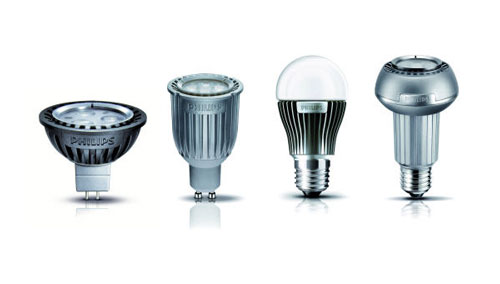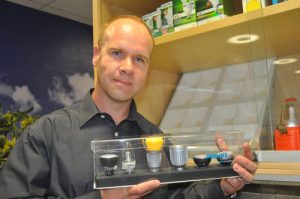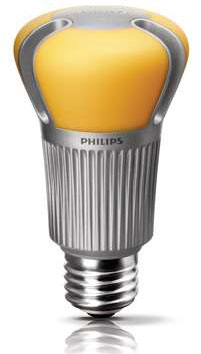
As electricity prices continue to spike higher each year and as Eskom continues pleading with residential and business users to cut their consumption to prevent another wave of nationwide rolling blackouts, there is growing interest from South Africans in highly power-efficient light-emitting diode (LED) lighting technology.
But the subject matter is complex, with few experts to hand to explain to consumers interested in moving from halogen lamps, fluorescent tubes and incandescent bulbs to LEDs how the technology works and what they need to know. With the sale of incandescent bulbs to be banned in SA from 2016, there is growing interest among consumers about LED solutions.
In an effort to get to grips with LED lighting and what consumers need to know, TechCentral editor Duncan McLeod sat down with an expert in the field, John Westermeyer, the regional marketing manager for lighting at Philips SA, to explore the fast-growing LED industry.
LEDs were invented by General Electric scientist Nick Holonyak in 1962. His first LED was a small, very low-powered indicator light that could be used in calculators or signalling devices.
But the technology didn’t take off until 1993, when Shuji Nakamura of Japan’s Nichia Corp invented the first high-brightness blue LED suitable for mass production. This was the key to producing modern, bright, white LED lighting. After the technology began to take off in the early 2000s, and as television makers ramped up production of LED components for modern, flat-panel TVs, prices began to plummet, making them a relatively affordable general-purpose alternative to conventional lighting products.
Westermeyer says prices are now halving every 18-24 months, with the lifespan of the products improving constantly. This means the technology has reached the point where consumers should consider switching.
He says moving to LED technology can slash consumers’ electricity bills because, for example, an LED downlighter that produces the same amount of light as a halogen lamp consumes one-fifth of the power. So, 50W halogen downlighters can be replaced with 10W LED lamps. In a home with, say, 40 downlighters, that can translate into a huge saving in energy costs.

However, the upfront costs are high. Whereas a halogen downlighter typically costs less than R50, a good quality LED downlighter can fetch as much as R200 (cheaper and nastier variants are available for less than R100, but Westermeyer cautions consumers against buying these for a variety of reasons).
The market, he says, is being flooded by low-cost and poor-quality LED lighting solutions from China. These typically contain a large number of little diodes all clustered together. Often, their circuitry is not well built and they fail much sooner than more expensive solutions. They also produce a wide range of colours, from warm to cool, even though they often claim to be within a certain range.
“No one LED is exactly the same as the next one in terms of the colour temperature,” Westermeyer explains. “When they come out of the factory, they have to be ‘binned’ to ensure they’re grouped together in the same classification. A quality manufacturer will do a lot of sub-binning where they put the LEDs in one colour range in their own bin. The cheaper guys will choose a much wider range and put them together in the same packaging.”
The problem with this is consumers buy the cheaper brands and are then disappointed with the result, with colour differences in their rooms. They then label LED technology as poor and often go back to more power-hungry solutions. Westermeyer says local retailers tend to stock cheap products because they can move more of them, but ultimately consumers are not getting great solutions and the image of LED lighting is harmed.
Poorly designed LEDs also have bad thermal management, meaning they dissipate heat badly, which can damage the circuitry in the lamps and even pop the LEDs. A quality LED product will dissipate most excess heat — which is already much less than what’s generated (and wasted) by incandescent globes — through the back of the lamp.
 Another area of contention in the LED lighting industry is the claimed lifetime of the products. LEDs last far longer than conventional lighting — 10 to 100 times as long and improving all the time – but there isn’t a “complete set of agreed-upon standards” for measuring their expected lifespan.
Another area of contention in the LED lighting industry is the claimed lifetime of the products. LEDs last far longer than conventional lighting — 10 to 100 times as long and improving all the time – but there isn’t a “complete set of agreed-upon standards” for measuring their expected lifespan.
Westermeyer says LED lamp manufacturers use something known as the L70 method to calculate the lifespan of their products. L70 refers to the number of hours the lamp will burn before it reaches 70% of its initial light output, after which it’s deemed as having reached the end of its life.
Companies that make them typically test them for 6 000 hours and then extrapolate to calculate the lifespan of the lamp. However, they all use slightly different methods to calculate this, with some manufacturers making overstated claims about lamp life without using test reports than can be verified by independent bodies.
For a high-quality LED downlighter, Westermeyer says consumers should expect to pay as much as R200. But he believes the long-term cost-savings and the convenience of not having to replace the lamps because of their exceptional lifespan means consumers shouldn’t wait to begin switching.
He says those worried about the high up-front costs can replace lamps room by room in their homes rather than incurring the costs of a full replacement immediately. They can even replace lamps individually, if necessary, though it’s important to match the colour temperature of the other lights in the room. For example, a 50W, 2 700K halogen lamp should be replaced with a 10W, 2 700K LED.
Consumers also need to consider what sort of light spread they’re looking for — do they want a 40-degree angle of light or a narrower beam? — and what type of colour temperature they’re after.
In kitchens, bathrooms, offices and schools, cooler temperatures make more sense (a range of 4 000K to 5 000K is good, he says) whereas warmer light (2 700K to 3 000K) is more suited to bedrooms and living areas.
Another important thing to consider is if a home or office uses a low-voltage (12V) system, it’s best to buy a lamp that matches that otherwise an adapter or converter will be necessary, adding cost to the investment. Westermeyer says it’s not necessary to convert the power source to 240V to move to LED lighting.
Installations with dimmers add another piece of complexity to the puzzle. Consumers must be careful to ensure the lamps they buy work with their dimmer systems. “Find out from your lamp supplier which dimmers are compatible with their lamps.”
Another challenge is finding good quality lamps. Retailers are reluctant to stock them because the rate of sale is low. Cheaper options mean higher revenues and quicker stock turnover. But Westermeyer expects leading retailers will begin stocking better-quality LED options this year as prices continue to fall across the board. — Duncan McLeod, TechCentral
- Subscribe to our free daily newsletter
- Follow us on Twitter or on Google+ or on Facebook
- Visit our sister website, SportsCentral (still in beta)




